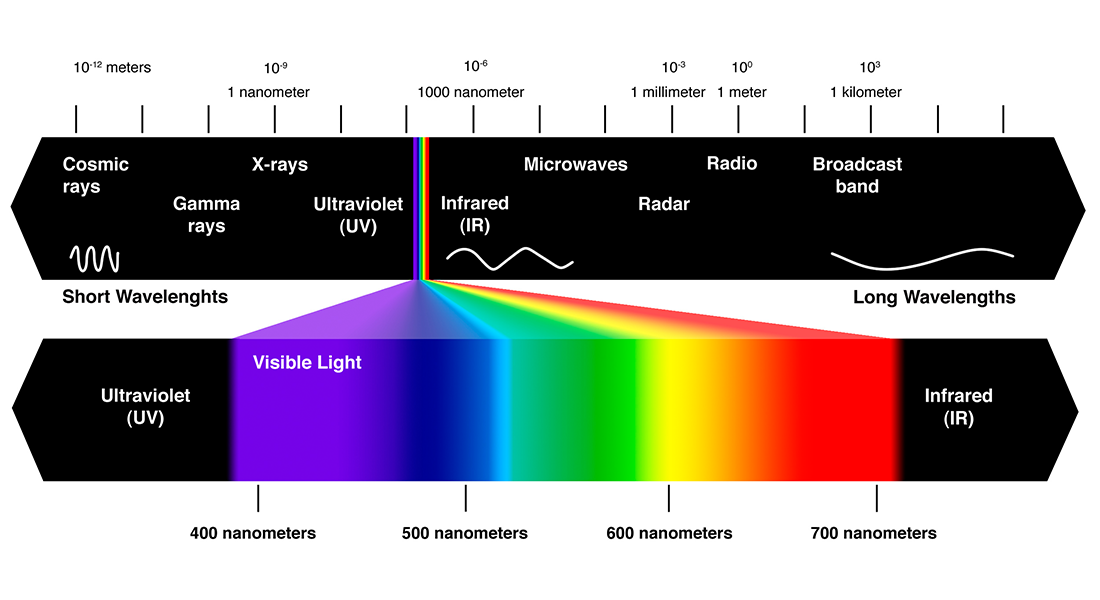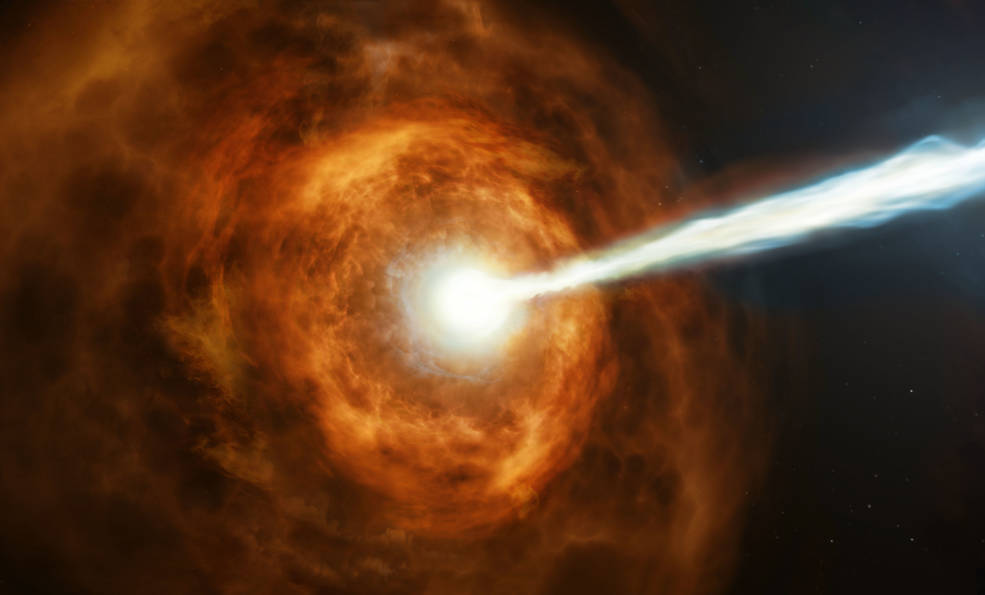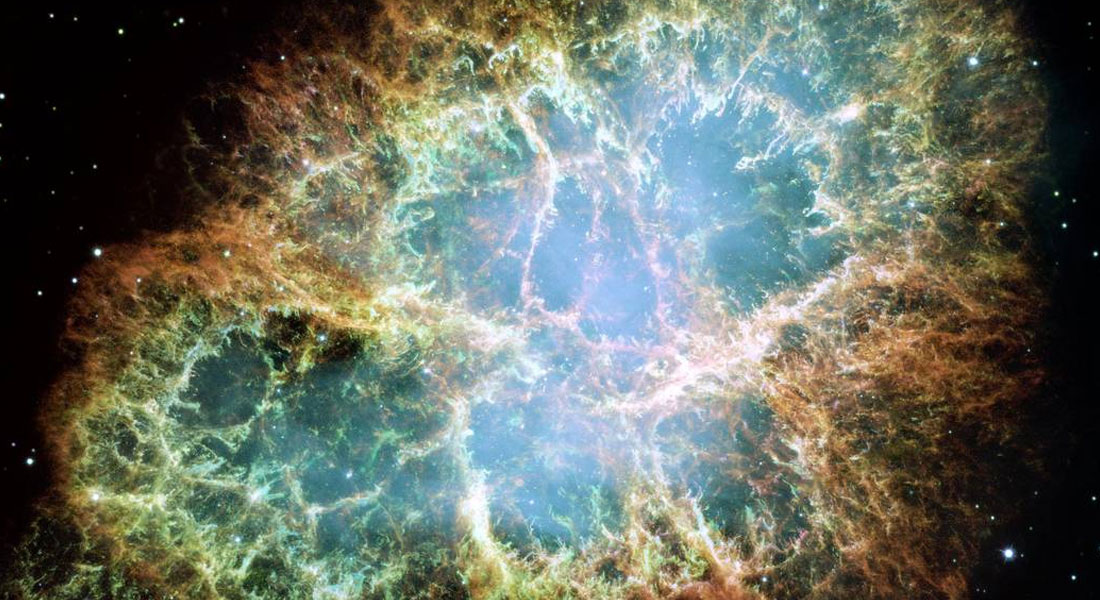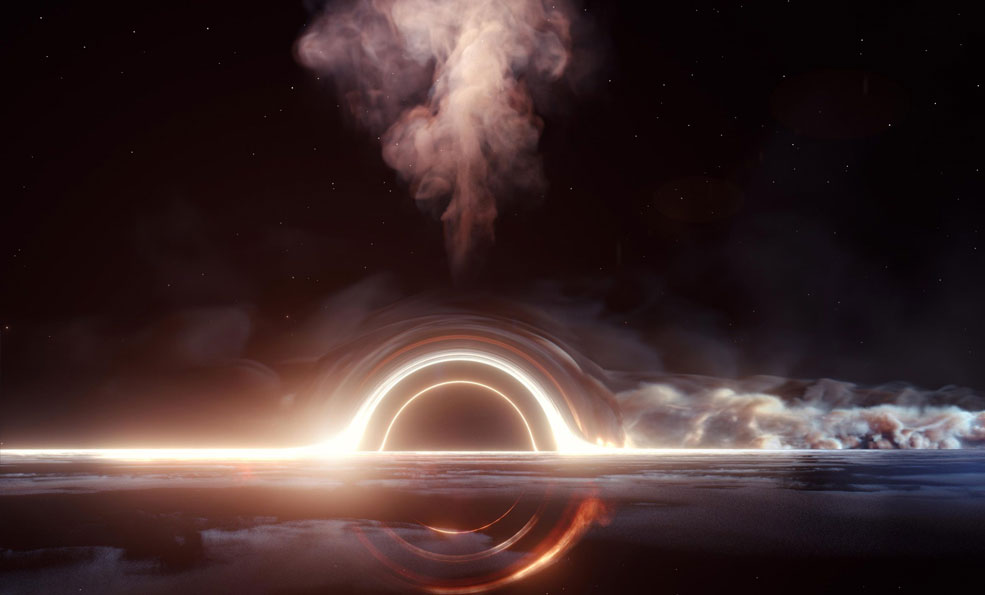Science with NTE
The science cases for NTE fall in two broad categories: science related to transient/ explosive sources (Gamma-ray burst follow-up, thermonuclear and core-collapse supernovae, general transients), and the remaining non-transient science cases including a very wide range of topics from planets to active galactic nuclei. Here some of the main science cases are discussed in more detail. The full list of the topics can be found from the NTE Science Cases document.

Transient science with NTE
Gamma-ray bursts
Gamma-ray bursts are short powerful bursts of gamma-rays. The so-called long gamma-ray bursts (duration longer than about two seconds), have been firmly associated with powerful core-collapse supernovae.
The short gamma-ray bursts (shorter than about two seconds) on the other hand are associated with merging neutron stars.

These powerful explosions can be used for studying starformation in distant galaxies, and even probing the universe at the time of the end of 'dark ages'.
Type Ia supernovae
Type Ia supernovae were the key in discovery of dark energy. It is now just over a decade since the apparent accelerating expansion rate of the universe was seen in the Type Ia supernova.
With almost a thousand published Type Ia supernovae, and yet a larger number being currently analyzed by the various SN teams, the emphasis for precision cosmology lies in understanding the systematic uncertainties: this is best tackled with high S/N studies of low redshift SNe.
The NTE is well suited for these studies, because of its simultaneous coverage of a wide wavelength region from near-UV to near-IR, ensuring that the end points of the spectra are studied also at very early epochs, something that is very rare today. The intermediate resolution allows absorption from the host galaxy as well as trace elements in the supernova (such as carbon) to be studied.
Core-collapse supernovae
Core-collapse supernovae mark the end-point of stellar evolution for massive stars. These cosmic explosions produce neutron stars and black holes, and in exceptional cases, long-duration Gamma-Ray Bursts.

Understanding these phenomenon are of an utmost importance as they synthesis all elements heavier than Fe, and through feedback effects, significant impact starformation and galaxy evolution.
The Nordic astronomical community is very active in this research topic and their particular interests include: (i) identifying the progenitor star, (ii) detailed understanding of the interaction between the core-collapse supernovae ejecta with circumstellar material, (iii) follow-up of the transients, (iv) the study of core-collapse supernovae in the dusty nuclear regions of starbursts and luminous infrared galaxies, (v) studies of core-collapse supernova rates, and (vi) studies of dust formation in core-collapse supernovae.
Non-transient science with NTE
Exoplanet atmospheres
Exoplanet atmospheres are in the focus of many astronomical studies, because they can give information on the evolution of the planets, and they can be used even for studying the planet's potential habitability.

A planet moving across the disc of its host star offers a unique opportunity to estimate the key constituents in the atmosphere by studying the light that has passed through the planetary atmosphere.
Active Galactic Nuclei (AGN)
Active Galactic Nuclei (AGN) are supermassive black holes that are accreting large amounts of material. Inactive supermassive black holes are likely to exist in the centres of all bulge-dominated galaxies.

In only a small fraction of galaxies the supermassive black hole is active. AGN are the most luminous non-transient sources of coherent energy in the universe, and understanding their activity is one of the outstanding goals in modern astrophysics.
Some open questions include: Why do AGN appear only in some galaxies and preferably in certain types of galaxies? What is the typical lifetime of AGN? What is their fuelling mechanism? What is the role played by galaxy interactions and mergers? How do supermassive black holes in galaxies grow and how do they influence galaxy formation?
Supermassive black holes have an important role in cosmology
They are the densest concentrations of matter, and thus play an important role in the formation and evolution of galaxies. In fact, the leading theory for explaining the nature of elliptical galaxies and some properties of clusters of galaxies involves the presence and feedback processes of central supermassive black holes.
Owing to the strong emission from this accreting material, the active galactic nuclei are traceable out to large distances (unlike the quiescent black holes).
These ’lighthouses’ are ideal for (i) locating the more massive galaxies in the distant Universe and studying their cosmic evolution, (ii) studying black hole growth, accretion processes, and feedback on large spatial scales, (iii) studying the non-emitting intervening intergalactic material, (iv) measuring cosmic distances, and (v) studying strong gravity fields.
The wide energy range over which these systems emit, makes a broad-band spectrograph an efficient like NTE, ideal, and necessary way to study these systems.
